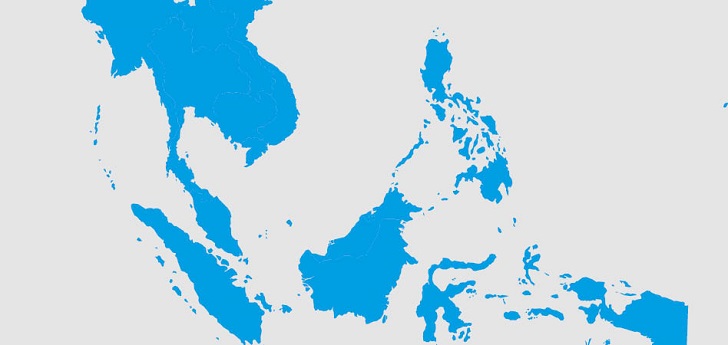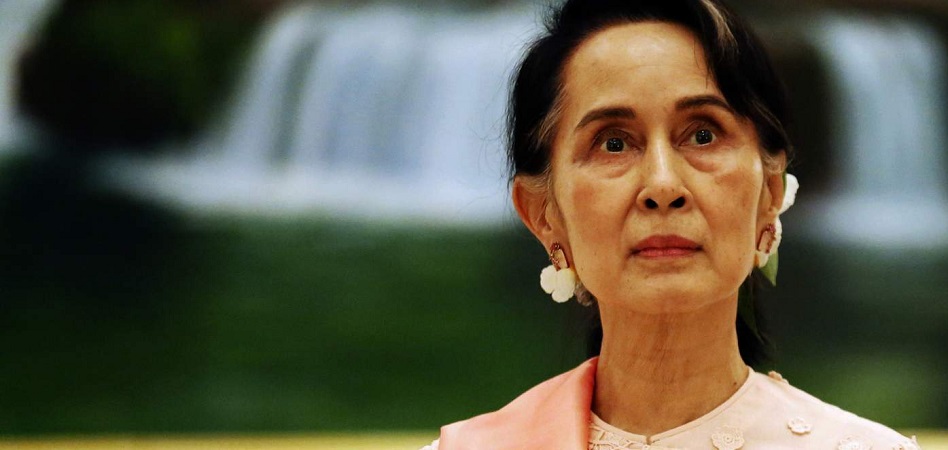A Changing World: Southeast Asia, testing the resilience in the driving force of the world
The region that grows the most in the globe faces major challenges after years of rapid development: from the ageing of the population to the transformation of its economic model.

Fashion business’ game board has turned around. The legacy of the crisis, instability, the peak of populist movements, the attempts to move backwards in globalization and the threat of the global economic downturn has made almost all the predictions fail one by one. The world undergoes a transformation, and fashion, as a global player, must adapt and transform with it. MDS will go through the keys for the new order in the most important markets in the sector and how this can affect one of the most globalized business in the world.
The driving force of the planet is at a turning point. Southeast Asia, the fastest growing region in the world, will continue to capitalize on the rapid development of the recent decades, opening up to the world and creating new consumer markets, but also faces major challenges that will test the resilience that this part of the planet has already proven to have many times in the past.
Southeast Asia groups eleven countries: Brunei, Cambodia, the Philippines, Indonesia, Laos, Malaysia, Myanmar, Singapore, Thailand, East Timor and Vietnam, according to the United Nations (UN).
Economically, the region is very diverse: from eminently agricultural markets such as Laos to economic powers such as Singapore, a city state with one of the highest GDP per capita in the world, and countries such as the Philippines, Malaysia or Thailand, which have industrialized at a high speed in recent years.
Just twenty years ago, Myanmar was closed to the world under the government of Than Shwe, described as one of the five worst dictators in the world and Cambodia was just beginning to end the military conflict, while the richest powers in the region suffered the blow of the Asian financial crisis of 1997.
But then, everything changed: the almost simultaneous political and economic transition of these countries that, even in the communists Vietnam and Laos, embraced liberalism, resulted in one of the fastest-growing regions of the world.
In the last five years, the ten economies of the area grew at an annual rate of 5%, behind China and India but well above rates in Europe, the United States or Japan.
According to the latest forecasts of the International Monetary Fund (IMF), the region will grow by 5.1% this year, well above the 3.9% from Africa, the 2.5% from North America, the 2.2% from Latin America and the 2% from Europe. The entity anticipates that the growth in Southeast Asia will be maintained above 5% at least until 2022, with Myanmar and the Philippines as the main drivers with increases of around 7%. Indonesia is the largest economy in the region and the only one that is part of the G-20.

Nine of the ten countries in the region, excluding East Timor, also benefit from a high rate of economic integration under the umbrella of the Association of Southeast Asian Nations (ASEAN). In recent years, the organization has strengthened its ties abroad with numerous trade agreements, although economists anticipate that, in the current context marked by the protectionist drives of the two major powers, these agreements are more likely to be on a bilateral level rather than all the countries as a whole.
That is what has happened, for instance, with the European Union, which, although maintaining its interest in reaching an agreement with ASEAN, has not resumed talks since 2009. On the other hand, last year the EU market already signed its first free trade agreement with one of the member countries, Singapore.
Politically, however, full democracy remains as the great pending task of Southeast Asia. In the Democracy Index, produced by The Economist, only East Timor scores more than seven.
In Cambodia and Malaysia, opponents continue to be harshly persecuted, in Thailand elections will be held this year, but the twenty-year plan of General Prayut Chan-o-cha, current president, is guaranteed by the constitution, and Myanmar has been accused of violating human rights for the persecution of the Rohingya under the leadership of Nobel Peace Prize winner Aung San Suu Kyi.

The demographic risk
From a sociodemographic point of view, Southeast Asia is one of the most diverse regions of the globe: it houses the only Catholic country in the continent, the Philippines, but also the largest Muslim country in the world, Indonesia; its GDP per capita ranges from 4,000 dollars per capita in Cambodia to 94,100 dollars in Singapore; and in Malaysia, for example, only 50% of the population is of local origin.
However, it also has common elements, such as the rapid urbanization or the growing ageing, which represent one of the greatest sources of risks for the region: the demographic model that has sustained its rapid development is coming to an end.
According to the UN, the urban population rate will go from 49% today to 56% in 2030, which means 80 million more people living in the cities of Southeast Asia. In parallel, the organization calculates that the population over sixty years will go from the current 10% to 21.1% in 2050, although this transformation is occurring faster in some countries than in others. While Indonesia and the Philippines still have a very young demographic structure, Thailand and Vietnam are beginning to age and in Malaysia the transition towards an ageing society has already begun.
In October, the European Commission began to evaluate the possible withdrawal of Myanmar from the Everything But Arms (EBA)
This transition poses a risk to the current production model of the region, based largely on full employment with low-paid jobs, according to the economist Manu Bhaskaran in an article published by the IMF in September 2018. In addition, its inhabitants are not ready yet for this demographic transfer: according to a study by the Financial Times, only half of the population claims to be “sure that they will be able to live comfortably during their retirement.”
From production pole to consumer market
The rapid industrialization of Southeast Asia made the region one of the main poles for fashion supply, a role reinforced by the rising costs in China, which moved part of the production to the region. Between January and November 2018, Europe imported clothes worth 17.71 billion euros from Southeast Asia, with Vientam, Cambodia and Indonesia as the main suppliers. The figure surpasses purchases from Bangladesh (14.5 billion in the same period) or Turkey (13.2 billion).
However, two of these markets today are under microscope. In October, the European Commission began to evaluate the possible withdrawal of Myanmar from the Everything But Arms (EBA) program, through which the country can export any article to the European Union without scarcely any tariff, except arms, due to the Rohingya crisis.
On the other hand, the European Executive also initiated the process to close to Cambodia the access to the program of trade preferences. Brussels decided to penalize the country on holding elections that were considered unfair and illegitimate.
The rapid development of these countries has turned them into a growing consumer market
In parallel, the rapid development of these countries has turned them into a growing consumer market, particularly in sectors such as cosmetics. In fact, the category of health, beauty and well-being is the third that takes the largest discretionary expenditure from the inhabitants of the region, only behind travel and leisure, according to the report Asean Middle-Income Consumer Survey prepared by Hong Kong Trade Development Council.
In terms of fashion, the middle class of Southeast Asia allocates the bulk of its budget to working clothes (28%) followed by casual wear (26%) and footwear (22%). The report anticipates that Jakarta, Kuala Lumpur, Manila, Singapore and Bangkok will be the five largest cities for medium-term consumption.
Digitalization: from zero to one hundred
Along with economic development and urbanization, the third mainstay that is enhancing the growth of consumption in Southeast Asia is digitalization. The digital economy will reach 240 billion dollars in the region in 2025, according to the study E-Conomy Southeast Asia 2018, prepared by Google and Temasek.
Only since 2015, the figure has doubled, reaching 72 billion dollars last year. The report underlines that digitalization marked a turning point in 2018, thanks to the high penetration of smartphones and the growth of businesses such as e-commerce, online entertainment or the booking of trips through the Internet.
Last year was also the first in which the e-commerce platform Lazada, launched by Rocket Internet and today under the control of Alibaba, introduced the Singles Day in the six Southeast Asia countries in which it operates: Singapore, Malaysia, Thailand, Indonesia, Philippines and Vietnam.

According to Lazada, twenty million people surfed on its website and purchased on November 11, with Maybelline and L’Oréal Paris as the two most popular brands. “The population is young, the penetration of the mobile phone is high and only 3% of the sales are carried through the online channel, so we are confident of doubling our business in the Southeast Asia,” affirmed Lucy Pen, then president of Lazada.
In addition, digitalization is where a large part of region’s economic future could reside: “advances in artificial intelligence, including robotics, along with innovations like 3D printing, will transform production process, making them less labour-intensive and creating opportunities for new products,” explained Bhaskaran in his article. “This will allow new ways of doing things and will change the vectors of competitiveness,” stated the expert.
Southeast Asia has proven to be invincible capitalizing economic liberalism in the industrial era. Now, the region finds itself at a turning point and what is at stake is its role in the world (predictably multi-polar) of the next few decades.


info@themds.com
Validation policy for comments:
MDS does not perform prior verification for the publication of comments. However, to prevent anonymous comments from affecting the rights of third parties without the ability to reply, all comments require a valid email address, which won’t be visible or shared.
Enter your name and email address to be able to comment on this news: once you click on the link you will find within your verification email, your comment will be published.